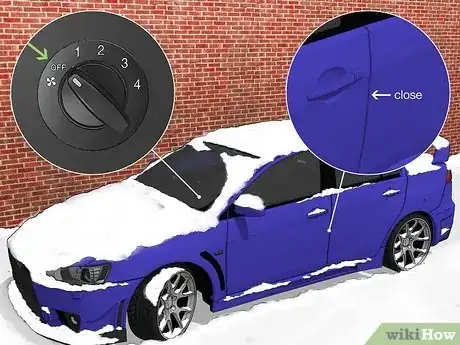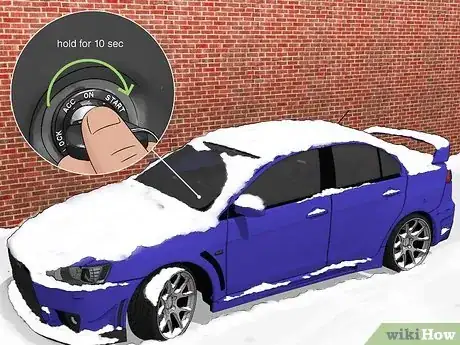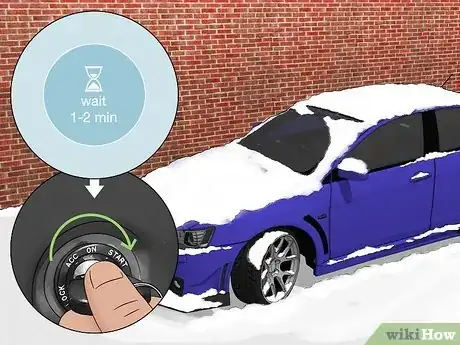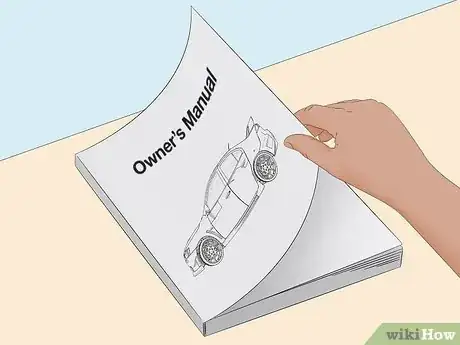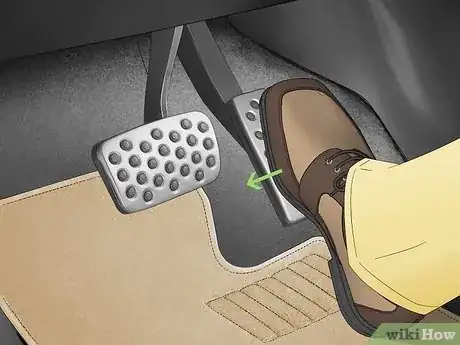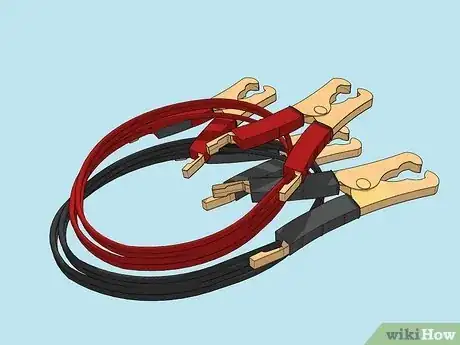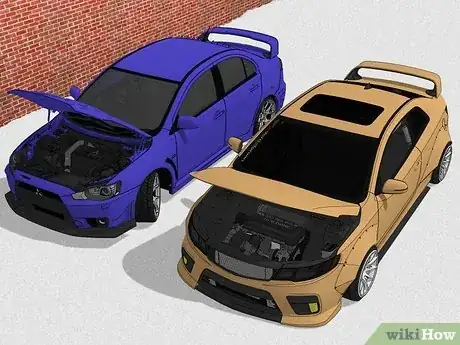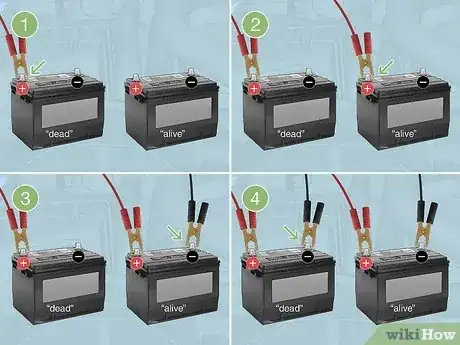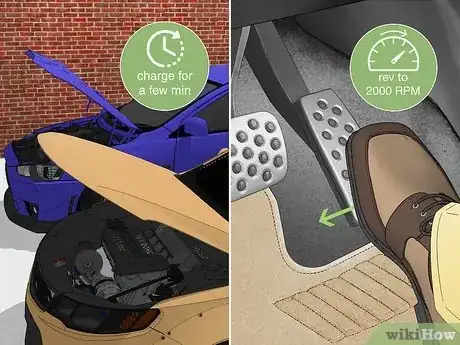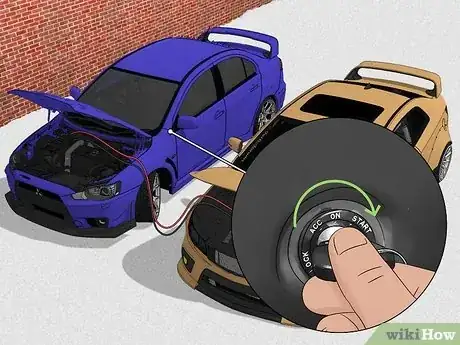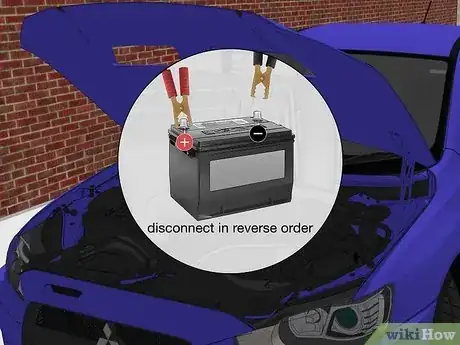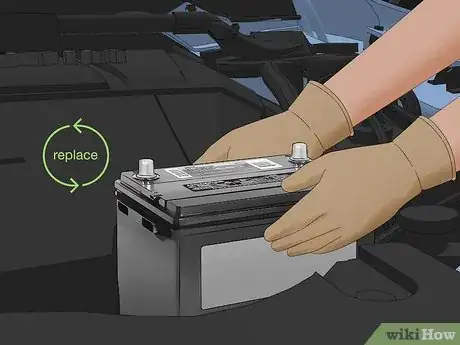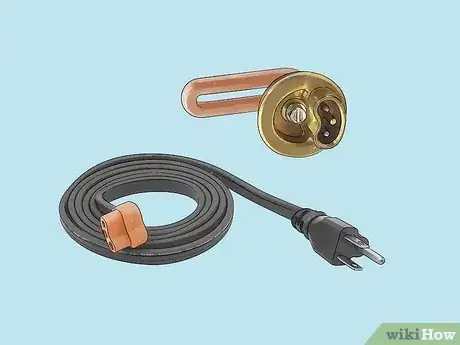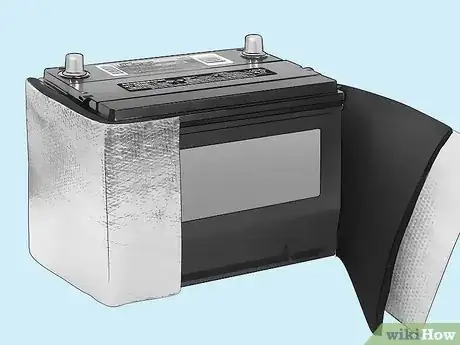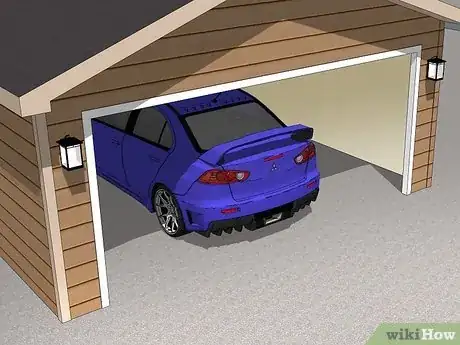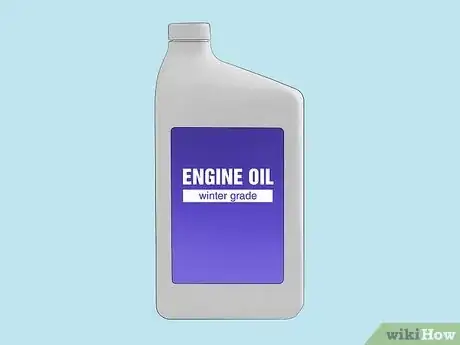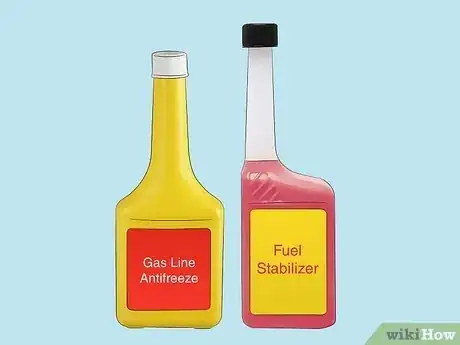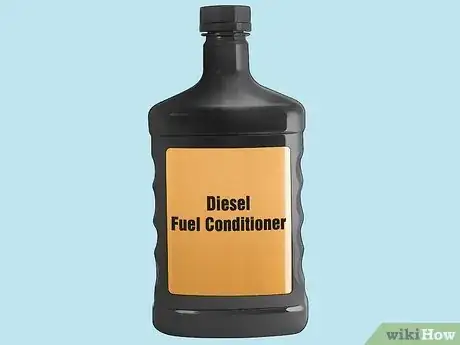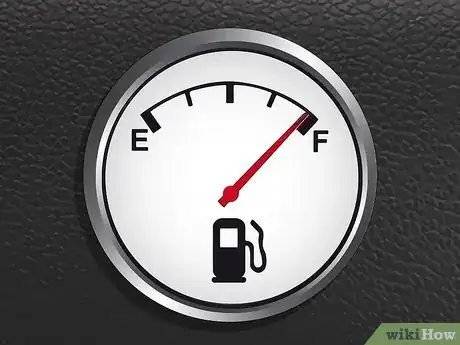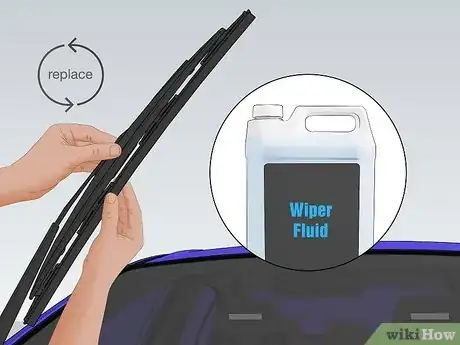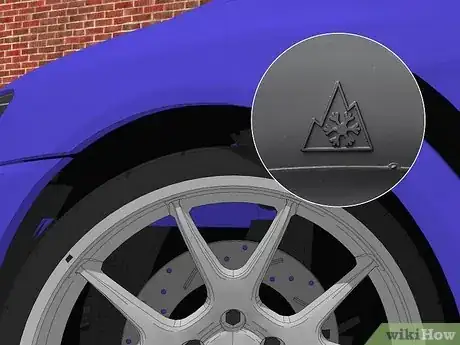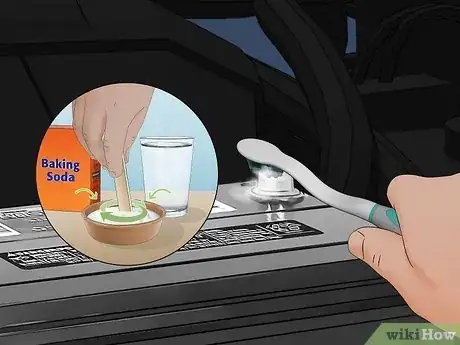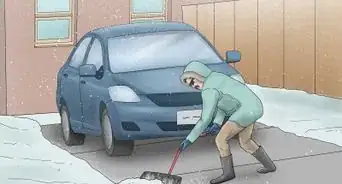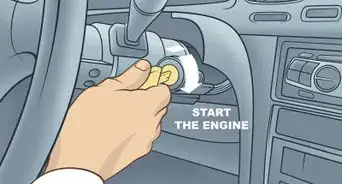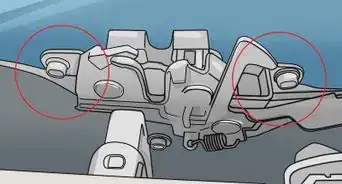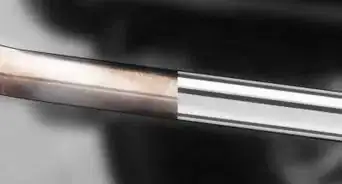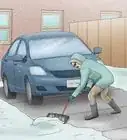This article was co-authored by Audra Fordin. Audra Fordin is a Certified Automotive Technician, the Founder of Women Auto Know, and the Owner of Great Bear Auto Repair in Flushing, New York. With more than 38 years of experience, she has intensive knowledge about foreign and domestic auto repairs. Audra has been featured on numerous news and talk shows such as The Today Show, Inside Edition, and Anderson Cooper.
There are 12 references cited in this article, which can be found at the bottom of the page.
wikiHow marks an article as reader-approved once it receives enough positive feedback. In this case, 84% of readers who voted found the article helpful, earning it our reader-approved status.
This article has been viewed 1,853,411 times.
Freezing cold weather can take a toll on car batteries. That's why it's important to be prepared for the winter season and the car trouble that might ensue. Read after the jump to learn what to do when your car won't start and what you can do to prevent this problem beforehand.
Steps
Starting the Engine
-
1Minimize electrical drain on the battery. Ideally, this was done when the car was last used before the cold weather hit. But doing these steps just prior to starting will give you the best chance of starting.[1]
- Shut the car's doors (mostly to keep the overhead light off)
- Turn off all accessories; this includes the heater/blower, radio and lights.
-
2Turn the key to start and hold it for up to 10 seconds. Don't hold it for any longer than 10 seconds, as overworking the starter will not make it any more likely to start.
- If you put the key in the ignition, turn it, and check if the dashboard lights up. If you do, there is at least some charge in the battery--a good sign.
- If there is no sound, (no start-up motor noise or no ticking) with turning the key and no lights on the dash, you most likely have a completely dead battery. Stop and get help in jumping the battery. No amount of starting will start the car unless the battery issue is resolved.
- Turn the key and try to start the engine. Hopefully, it will start up with or without some hesitation.[2] Hesitation is fine--it does not hurt the engine.
- If there is a ticking but with no engine turnover there may not be quite enough battery power to start the ignition. Stop at this point, because the battery is too drained to start properly.
- If the engine fails to crank, wait a couple of minutes and try again. Sometimes this will allow some residual charge to build in the battery, and possibly enough to start the engine.
Advertisement -
3Let the battery recover if the car fails to start. If your car does not start after ten to twenty seconds of cranking, stop and wait for a minute or two before attempting to start again. This gives the battery time to recover, and it will have warmed a bit. Mostly, it allows the starter motor to cool down.
- If the car is coming close to starting, but seems sluggish, give it a break and try again. If the battery won't make any effort to turn the engine over, it is discharged and you're going to need to jump it.
- If after trying many times the starter is still sluggish, you may need to heat up the battery. You can do this by removing it and bringing it inside, but be aware you may have a fault indication for a while after it is reinstalled. You will not harm the vehicle by removing the battery. From very cold weather, it may take up to 2 hours to warm the battery sufficiently to increase its available amperage.
-
4Consult the owner's manual. Almost every vehicle today has cold-starting instructions in the Operator's Manual that instruct you to use a small amount of throttle to help with a cold start. Refer to your vehicle's Operator's Manual for further information.
- If you do not have the owner's manual for your car, you can order one from a car dealer, find one at a salvage yard or look for one at an auto parts chain.
- You can also find many owner's manuals online. Try typing in "car owner manual" into a reputable search engine and look for relevant results.
-
5For cars older than about 1985, with engines with a carburetor, gently push on the gas pedal while still parked. Depress the accelerator once and then release it. This will dispense a small amount of fuel into the intake, which can help get things going. Note that there is no need to do this with fuel-injected engines. If your car is newer than about 1990, it has electronic fuel injection.
Jumping a Dead Battery
-
1Jump-start the battery if it fails completely to start. If the starter won't turn over at all, your battery is probably dead. It's now time for a jump-start. You will need a set of jumper cables and a willing volunteer with a running car to complete the jump.
-
2Position the running car as close to the car with the dead battery as possible. You'll want the front ends of the cars facing each other, if possible.[3]
-
3Hook up the jumper cables to the appropriate terminals. Look for the + and - symbols on the jumper cables and connect the one with the + symbol to the positive terminals on both the running car and the car with the dead battery. Attach the cable with the - symbol to the negative terminals.[4]
- An easy way to remember how to hook up the jumper cables is to remember "red-dead, red-alive." Hook up the red clamp to the red post on the dead battery, then the red clamp to the red post on the running car, and then do the opposite for the black clamps. The black post to the "alive" car and lastly the black clamp to the "dead" car. Please note that the black clamp on the "dead" car must be connected either an unpainted engine bolt or the mounting bracket of the alternator, not the battery terminal itself. This is to avoid a short circuit.
-
4Allow the dead battery to charge from the running car for a few minutes. When you are about to start the car with the dead battery, it may be helpful to rev the running car a bit. 2000 RPM is plenty.
-
5Try to start the car with the dead battery. If it doesn't work on the first try, double-check to make sure the jumper cables are connected properly (especially the negative/black cable if not connected to the battery) before letting the running car run for a while and trying again.[5]
-
6Disconnect the cables promptly, but continue to run the engine of the both cars for several minutes to ensure both batteries have charged enough for another start. Since modern cars have alternators, they are able to maintain charging voltage even at idle RPM. There is no need to rev the engine.
-
7Replace the battery if necessary. At some point in every car's lifetime, its battery must be replaced. This is because car batteries have a limited service life, and no amount of maintenance or care can reverse the effects of chemicals on metal. Car batteries typically last about four years.[6]
- If you're changing your car battery yourself, ensure your vehicle is turned off and in park, with the emergency brake set.
- Always wear gloves and safety glasses when changing the battery of a car, as car batteries contain potentially hazardous acids and gases, which can be released if the battery is mishandled. You should also make sure that your car battery is recycled using the correct procedures, you can do this by bringing your used battery to a local recycling center, or to certain repair shops.
Preventing Problems
-
1Warm the engine with a block heater. An engine block heater is a small heating device installed in the engine that plugs into a wall socket. It warms the engine and oil and eases start-up. Engine block heaters are not expensive, but they must be installed properly by a mechanic.[7]
-
2Keeping your car's battery warm. Your car's battery can deliver much more power when it's warm. You can do this using a battery wrap.
- A battery wrap or blanket is usually a fixed installation of insulation and heating element around the battery. They require about an hour to sufficiently warm the battery.
-
3Park indoors. Parking indoors, in a garage, helps to shelter a car's engine from icy winds and freezing temperatures. Heat the garage, if possible, to keep the temperature warmer.
-
4Use thinner oil. In the extreme cold, oil thickens and doesn't flow quickly to vital engine parts that need lubrication. A lightweight, winter-grade oil flows easier in cold weather and increases fuel economy.[8] Your owner's manual should tell you the ideal type of oil you should use.
-
5Use gas line antifreeze with fuel stabilizer. Gas line antifreeze, also known as dry gas, is a chemical (essentially Methyl Hydrate) that is added to your gas tank to inhibit your gas line freezing. If your gas line freezes, your car will not be able to start until it thaws. Many gas stations already add an anti-freeze agent into their gas during colder weather months. Check with your station of choice and see if this is their practice.[9]
- Add dry gas to your petrol or gas fill-up before filling the tank (if possible) to ensure it mixes completely in the tank.
-
6For diesel engines, consider using fuel conditioner. A fuel conditioner is a multi-functional diesel fuel additive. A diesel engine will start better in the cold if you use fuel conditioner, which prevents the fuel from "gelling" and ensures reliable fuel performance in severe winter conditions.
-
7Keep your fuel tank full. Condensation on the walls of a gas tank will form and will eventually sink to the bottom and cause freezing problems in your fuel lines. It's much more difficult to start a cold car with a mostly-empty tank, so do yourself a favor and gas up often in the winter before letting the car sit.
Winterizing Your Car
-
1Replace your windshield wipers and wiper fluid. Wiper blades crack in the cold and become much less effective, which can be dangerous in inclement weather. Low visibility can make driving in cold weather extremely dangerous, so it's important to make sure the wiper blades are up in tip-top shape.[10] Replace them every 6 months or so.
-
2Check your tire pressure and consider snow tires. Extreme shifts in temperature affects the pressure of your tires, and driving on tires with inadequate pressure in them can be quite dangerous. Cold tires will read differently than tires that have been warmed, so you'll want to drive around a bit before checking the pressure at the gas station or at the tire shop.
- If you live in a place with heavy snowfall, consider putting snow tires on your car, or purchasing a set of chains to use in bad weather. Check your local laws on the use of chains however, as they are illegal in some regions due to the risk of damage to the road surface.
-
3Maintain the battery. Winter is tough on batteries, for two main reasons. The battery cannot produce its normal amount of power because of the cold. The chemical reactions that generate electricity are slower at a lower temperatures.[11] Checking your car battery from time to time will help you stay on top of any maintenance issues, but be aware that most car batteries only last between three and five years. In addition, engines are harder to turn over because the oil inside them is thicker. This demands more amperage from a battery. Multi-viscosity oils, such as 10W30, though, alleviate most of this impact.
- Check the battery cables and clamps for fraying or corrosion. If there's a white, powdery substance around the clamps, that's corrosion from battery acid. You can clean it off easily with baking soda, water and a toothbrush.
- Your battery contains a liquid electrolyte, which can evaporate and spill so make sure it has enough inside. Most batteries have caps on top, and you can check the level by removing the caps. If it's low, fill the holes with distilled water, being careful not to fill past any fill level indicator or the bottom of the cap.[12]
Expert Q&A
-
QuestionHow long does a car take to start in the cold?
 Audra FordinAudra Fordin is a Certified Automotive Technician, the Founder of Women Auto Know, and the Owner of Great Bear Auto Repair in Flushing, New York. With more than 38 years of experience, she has intensive knowledge about foreign and domestic auto repairs. Audra has been featured on numerous news and talk shows such as The Today Show, Inside Edition, and Anderson Cooper.
Audra FordinAudra Fordin is a Certified Automotive Technician, the Founder of Women Auto Know, and the Owner of Great Bear Auto Repair in Flushing, New York. With more than 38 years of experience, she has intensive knowledge about foreign and domestic auto repairs. Audra has been featured on numerous news and talk shows such as The Today Show, Inside Edition, and Anderson Cooper.
Certified Automotive Technician Around 15-30 seconds! Depending on the temperature and reaction of your car, it can even take as long as a minute.
Around 15-30 seconds! Depending on the temperature and reaction of your car, it can even take as long as a minute. -
QuestionIs there any way to use a spray to start a fuel-injected engine?
 Community AnswerYou should never need to; fuel-injected means it's automatically injected by your computer. If your car isn't getting fuel, check the fuel pump pressure, fuel lines, fuel filters, fuel injectors, relays, and PCM/ECM.
Community AnswerYou should never need to; fuel-injected means it's automatically injected by your computer. If your car isn't getting fuel, check the fuel pump pressure, fuel lines, fuel filters, fuel injectors, relays, and PCM/ECM. -
QuestionMy car won't start, and it's -30 F here. Will a jump start it?
 Andrew GeepCommunity AnswerThere is no reason it shouldn't. If the outside source — either a battery or running vehicle — is up to par and the cables are in good condition and attached properly, you should be good to go.
Andrew GeepCommunity AnswerThere is no reason it shouldn't. If the outside source — either a battery or running vehicle — is up to par and the cables are in good condition and attached properly, you should be good to go.
Warnings
- Never heat your battery by direct application of high heat. Never make a fire and park your car over the burning embers.⧼thumbs_response⧽
References
- ↑ https://www.youtube.com/watch?v=79maAyAmSEA
- ↑ Audra Fordin. Certified Automotive Technician. Expert Interview. 13 January 2022.
- ↑ https://www.consumerreports.org/car-batteries/jump-start-car-with-dead-battery/
- ↑ https://www.artofmanliness.com/articles/how-to-jump-start-a-car-the-complete-guide/
- ↑ https://www.dummies.com/home-garden/car-repair/how-to-jump-start-a-car/
- ↑ https://www.carbibles.com/car-battery-life/
- ↑ https://www.cars.com/articles/tips-for-starting-your-car-in-subzero-weather-1420663036386/
- ↑ http://www.smartmotorist.com/driving-guideline/starting-your-car-in-extremely-cold-conditions.html
- ↑ https://www.cars.com/articles/how-to-store-your-car-for-winter-1420663046202/
About This Article
To start a car in freezing cold winter weather, start by shutting all of the doors and turning off any accessories, like the heater, radio, and lights. Then, put the keys in the ignition and turn and hold the key for up to 10 seconds. If the car doesn't start after 10 seconds, wait a minute or 2 before trying again. If you're still not able to start the car, the battery may be dead and you'll need to jump start it with jumper cables and another vehicle. For tips on preventing a dead battery during freezing cold weather, scroll down!
